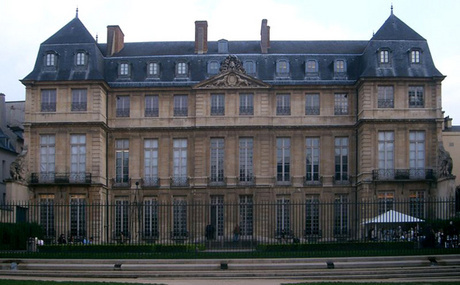Picasso Museum
If you are visiting Barcelona and have any interest in the art world at all, you cannot deny yourself a visit to the Picasso Museum. Featuring one of the most extensive collections of the famous 20th century Spanish artist, Pablo Picasso, this museum is housed in five interconnected medieval palaces in the Barri Gothic, the centre of the old city of Barcelona.
The Museu Picasso frequently hosts special exhibitions presenting artworks by Picasso and other artists. From time to time, the museum also organizes seminars and lectures on subjects related to Picasso or on museological issues of interest given by specialists from throughout the world.
The Picasso Museum is known as the wish of an artist to make his art a permanent part of the city that was such an important part of his career. Picasso came to Barcelona in 1894, and thereafter divided his time between Barcelona and Paris. Barcelona was the city that shaped his youth and adolescence, and his mark remains on the city years after his death.
Viewing this collection is akin to watching a young man's relationship with his city. The Picasso Museum describes the work of Picasso before he left Barcelona to travel to Paris, and in the paintings in the permanent collection, you can see his relationship with the city. In his paintings of the urban landscape and of the street scenes that he became famous for, one can see Picasso's Barcelona a place that left its indelible mark on him.
Pablo Picasso, as the co-founder of cubism, was one of the most influential artists of the twentieth century. With his breaks from slavish realism and with his deep insight into the psychology and feeling invested in a painting, Picasso opened up an era of modern art. His work is largely divided up into periods, all distinct, all equally important to the understanding of the artist's vision as a whole.
Though the later periods are often contested, Picasso's work can usually be divided into the Blue Period, the Rose Period, the African-influenced Period, Analytic Cubism and Synthetic Cubism. Works representative of each period can be seen at the Picasso Museum, but where this museum really shines is in its devotion to Picasso's early works. Particularly, there is a fascinating representation of Picasso's work from 1917, when he met his first wife, the ballerina Olga Kokhlova and journeyed to Rome. The Picasso Museum's collection shows a clear transition from Cubism to Picasso's return to classicism after his journey to Italy and in terms of his famous Blue Period, there is no other collection in the world that can compare.
The Picasso Museum of Barcelona opened its doors to the public on March 9, 1963 and was called the Sabartés Collection. This first portion of the sprawling museum occupied the Palau Aquilar, the first of the five palaces that would eventually end up sheltering the large collection. In 1970, a total of 920 works were donated to the museum by Picasso himself, works that had been until that time, safeguarded by Picasso's parents, his sister and his sister's children. This influx of material forced the museum to enlarge and take over the palace of the Baron of Castellet.
If you visit this museum, you will also be able to take in some of the most beautiful architecture that Barcelona's Barri Gothic has to offer. Located on the historic Carrer de Montcada, the buildings of the Picasso Museum are rich in a history that goes back hundreds of years. The Aquilar, Baro de Castellet and Meca palaces hold the permanent collections of the Picasso Museum, and renovations are currently underway to modernize the structures as well as maintain its presence and charm. The renovations started in 1999, and since then, Casa Mauri and the Palau Finestres have housed the museum's temporary exhibits. All five of the buildings have roots going back to the thirteenth century when the area was among the newest to be enclosed by city walls. These historic buildings give you a real idea of what Barcelona was like 600 hundred years ago, a feeling that cannot be duplicated in many other cities.
As one of the most popular and most visited museums in Barcelona, the Picasso Museum is quite accessible to anyone who is interested in visiting its hallowed halls. It is open Tuesdays to Sunday from 10 A.M. to 8 P.M. and is closed on working Mondays. Annually, it is closed January 1, May 1, June 24, and December 25 and 26. Free entrance is available February 11, May 18 and September 24. Ticket prices vary from about 4€ to 9€, depending on whether you are in a group or not and if you are visiting both the temporary exhibition and main collection. Entry to the Picasso Museum is free on the first Sunday of the month. Get there early - the line is unbelievably long.
If you have any interest in art, architecture, or history, this is one museum that you cannot miss. There are free guided tours of the Picasso Museum on Thursdays and Saturdays. The English tours begin at 6pm on a Thursday and 12 noon on a Saturday. There is a local tour operator that provides a guided visit of the Picasso Museum along with a tour of Picasso's favorite parts of Barcelona. Picasso's Barcelona is the center, so this tour is an ideal themed introduction to the city, showing you some of the biggest sites from the point of view of Pablo Picasso. Picasso Museum is very popular tourist attraction and is great place for sightseeing in Barcelona. You can get there via direct flight to Barcelona or to Girona, Reus or Lleida –Alguaire.




